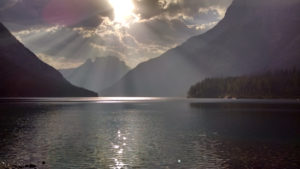
God makes a Great Big Deal about the joy that He finds in us, His children, as illustrated below in Zeph 3:17, as well as in passages like Psalm 139. But many of us, perhaps all of us at times, struggle with the eternal truth that our Heavenly Father takes great delight in us. The challenges of this life can often distract us from that delight, or even lead us to question it entirely. I think we’ve all been there, haven’t we? I know I have.
The Lord your God is in your midst,
A victorious warrior.
He will exult over you with joy,
He will be quiet in His love,
He will rejoice over you with shouts of joy.Zephaniah 3:17 NASB
I wrote “I See Joy” as a song for my lovely wife Dorinda to sing to our Lord Jesus, as a worship song. I had started out wanting to write a song to encourage her with my words, but I ended up being led to write a song to focus her attention on our Lord, to encourage and remind her of how God sees her, especially in the context of the trials of this journey we’re all on.
This past summer, as a family we climbed a couple of mountains together. Real mountains, not figurative ones. Well, there were figurative ones too, but these two were real. The first was Mt Yale in the Collegiate Peaks wilderness in Colorado, 9.5 miles total and 4,300 ft elevation gain. Our oldest son and I summited, while Dorinda and the younger two (mostly) contented themselves to get above treeline. The second was the little peak that the Numa fire lookout tower rests on in Glacier National Park, 12.5 miles total and 3,000 ft elevation gain. We all summited that one together (even our 5-year-old!). Mountaineering is a difficult but rewarding journey; I think that’s a pretty good reflection of both the little and the big challenges of life: we press on for the goal set before us, as the apostle Paul says, whether it’s a lifelong journey or one of many smaller mountain climbs along the way.
But along the way there is fellowship, there is beauty, there is weariness, and there is danger. And amidst it all we find that our Lord is faithful in His promise to never leave us nor forsake us, even though at times we need to cling to that promise with a tenacious and almost blind faith.
And as we turn to our Lord and are overwhelmed by His love for us, we see it – staring us in the face, really – the joy that He finds in us. Even just to get a little taste of it can be like being drowned in wave after wave of joy and love.
“I See Joy” is a little complex to be a typical congregational worship song. It’s meant be more personal, more exposing.
Musically, this song is written in 18/8 time, which is much like taking a song that’s already in 6/8 time and playing it with a swing feel, even though 6/8 already has a swing type of feel, thus giving triplets of triplets. This is intended to complement this song’s lyrics, but unfortunately it makes the musical score a little complicated! I almost need a “dotted dotted note” to avoid all the ties that end up in the score….
The verses are composed as statement-and-response, and the musical tone darkens in the responses, since the responses are most difficult. The response in the first verse is by us, to trust God’s faithfulness and press on, with our faith in His goodness being a shelter for us against the lies of the enemy. The response in the second verse is God’s sanctifying process, as He creates and unveils our beauty in much the same way that a river unveils the layered beauty of the landscape by, ironically, painfully cutting away at it. Think about the difference between a featureless desert and the Grand Canyon. The Canyon has been cut into deeply, but we would never know its true beauty, the artistry of its Creator, had it never been cut. Faithful are the wounds of a friend. Sometimes our Lord wounds us in our discipleship journey, but we must hold fast to hope – the hope that those wounds are never wasted. Yet, I believe our Lord sheds even greater tears than we do in that difficult process – just meditate on the shortest, yet perhaps the most profound, verse in the Bible: Jesus wept.
The chorus changes a little each time through, moving from and through the challenge before us to the vision of rising above the challenge in due time (“This mountain climb behind me”). When I wrote this, I didn’t foresee how it would one day be apropos for talking about not just a big challenge along life’s way, but also about a whole life. I ended up playing and singing this song at my dad’s memorial service back in March of this year, and it kinda gave some new meaning to that last chorus, “This mountain climb behind me”. I guess that’s art – it can take on a bit of a life of its own, even beyond the writer’s original intent. 🙂
Before I wrap up, two more tidbits about this song. First, you may wonder whether the line “As I dance through the meadows, a picture of grace” is a reference back to “On this mountain climb” or to the list of “As” phrases that culminate in our seeing God’s joy. The answer is, of course, “Yes.” It’s both. One would never do this in prose, but this isn’t prose, after all. 🙂 And, second, the photo above in this post and in the video is of Upper Kintla Lake in Glacier National Park. The sun’s rays are beautiful in this picture, but, in the same manner as this song’s theme, those rays are revealed by forest fire smoke, of all things.
Our journeys are hard. They’re sometimes painful. They’re undoubtedly long. Yet, they’re filled with beauty, with intimacy, and with a joy beyond comprehension. Don’t stop dancing in those meadows.
Resources:
